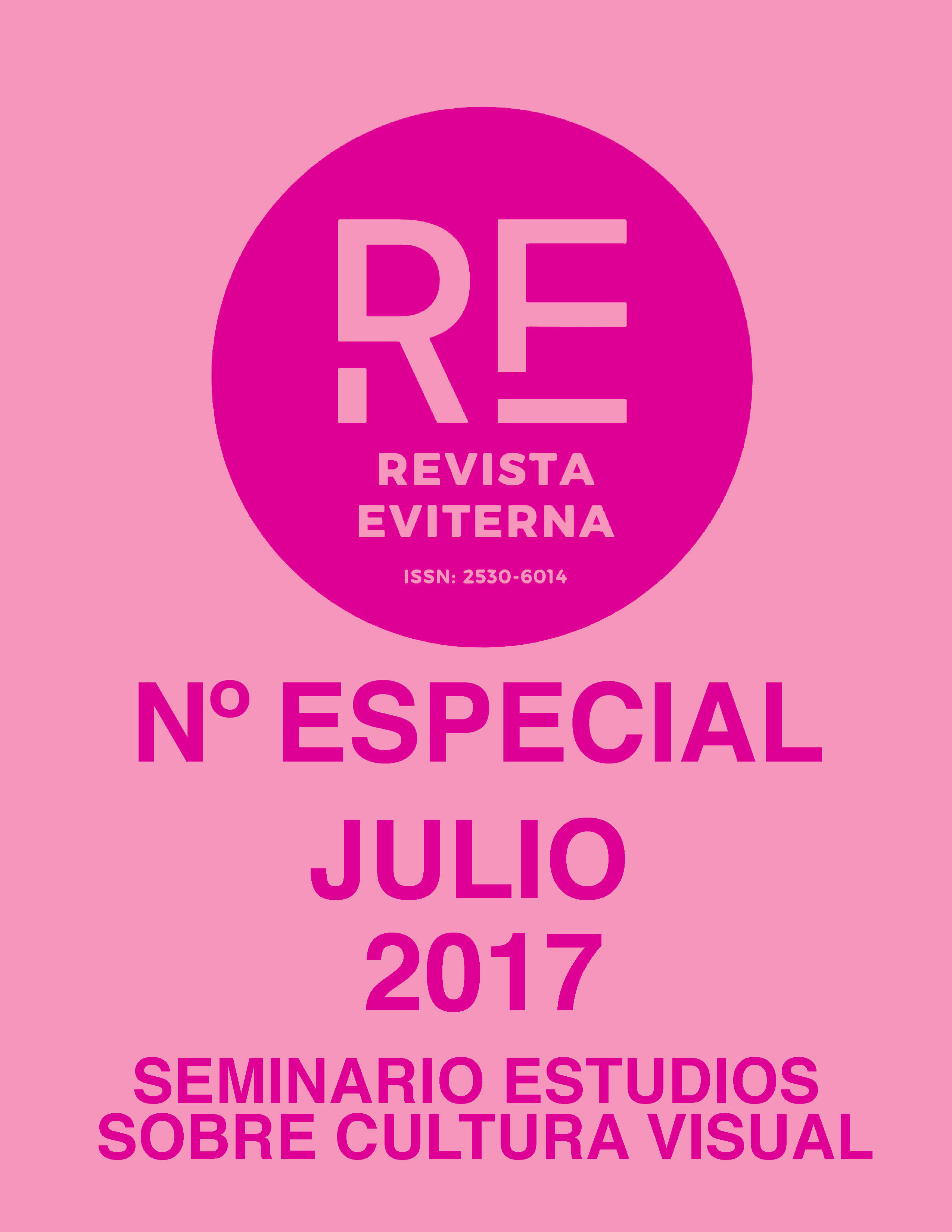Light, dematerialization and narrative transversality: the artistic installation of contemporary light and the gothic cathedral
DOI:
https://doi.org/10.24310/Eviternare.v1i1.9987Keywords:
Light, color, artistic installation, contemporary art, Gothic Cathedral, aesthetics, visual metaphorAbstract
This study settles an aesthetic hypothesis regarding the use of light as a language itself, able to create dematerialized and procedure-based spaces in two specific cases, the artistic installation of contemporary light and the Gothic Cathedral. In spite of its historical distance in time, both spaces use a very similar luminescent system, able to build an abstract and utopic ambience, which represents visual metaphors, lived throughout the corporal experience and the active participation of the spectators. Here, the work piece becomes a ritual that reestablishes itself as an event and as an extension of a mental concept breaking the boundaries between reality and what it is imagined. Light, color, volume and movement materialize it all.
Downloads
Metrics
Publication Facts
Reviewer profiles N/A
Author statements
Indexed in
-
—
- Academic society
- N/A
- Publisher
- Universidad de Málaga
References
ACUNA-ZUMBADO, Eduardo., (2002). Hacia la construcción del sujeto y sus procesos de lectura en la hipertextualidad latinoamericana. University of Kansas: Kansas, MA.
BLANCO, Sara., (2014). El arte y lo sagrado. Su encarnación en la Capilla Rothko en Ilu. Revista de Ciencias de las Religiones, no 14, Universidad de Granada, pp. 47-64
CAMILLE, Michelle., (2005). Arte Gótico. Visiones Gloriosas. Editorial AKAL S.A: Madrid
CASTRO, Sixto. J., (2003). La temporalidad de la obra de arte en Anuario filosófico, XXXVI/3, pp. 587-599.
DE BLAS ORTEGA, Mariano., (2011). Nulla Dies sine linea. El proceso como obra y la obra como proceso continuo. Trabajo final de máster. Universidad complutense de Madrid: Madrid
JANTZEN, Hans., (1970). La arquitectura gótica. Editorial Nueva Visión: Buenos Aires
MADERUELO, Javier., (2008). La idea de espacio en la arquitectura y el arte contemporáneos 1960- 1989. Editorial AKAL S.A: Madrid
MEDINA DEL RÍO, Juan Manuel y CASINELLO PLAZA, Ma Josefa., (2013). “La luz gótica. Paisaje religioso y arquitectónico de la época de las catedrales”. Hispania Sacra, LXV, Extra I, enero- junio, pp. 95-98
MENDEZ LLOPIS, Carles., (2013). “El espacio de la inmaterialidad. Del ocultamiento a plena vista de Olafur Eliasson” en Revista el artista, no 10, noviembre, pp. 131-139.
NIETO ALCAIDE, Victor., (2006). La luz, símbolo y sistema visual. Editorial Cátedra: Madrid
ROCCA VÁSQUEZ, Adolfo., Arte conceptual y posconceptual; la idea como arte: Duchamp, Beuys, Cage y Fluxus (1a parte) Recuperado de: http://www.margencero.com/almiar/arte- conceptual- postconceptual- duchamp-beuys-fluxus-cage/ (consulta: 17/08/2016)
RODRÍGUEZ CUNILL, Inmaculada., (1999). Multiplicidad y fragmentariedad en el arte contemporáneo a través de un análisis de instalaciones y videoinstalaciones. Tesis Doctoral.
Universidad de Sevilla: Sevilla.
RUÍZ DOMÈNECH, José Enrique., (1980). El origen de la catedral: estética escolástica e ideología eclesiástica en Revista Medievalia, Vol. 1. Barcelona, pp. 49-82
SEBASTIÁN, Santiago., (2012). Mensaje simbólico del Arte Medieval. Editorial Encuentro: Madrid
TATARKIEWICZ, Wladyslaw., (2007). La estética medieval. Historia de la estética. Vol. II. Editorial AKAL S. A: Madrid
ÚBEDA FERNÁNDEZ, María Elena., (2006., La Mirada desbordada: el espesor de la experiencia del sujeto estético en el marco de la crisis del régimen escópico. Tesis Doctoral. Editorial de la Universidad de Granada: Granada
Downloads
Published
How to Cite
Issue
Section
License
All the contents published in Revista Eviterna are subject to the Creative Commons Reconocimento-NoComercia-Compartirigual 4.0 license, the full text of which can be found at <http://creativecommons.org/licenses/by-nc-sa/4.0>
They may be copied, used, disseminated, transmitted and publicly exposed, provided that:
The authorship and original source of your publication (Journal, editorial and URL of the work) are cited.
They are not used for commercial purposes.
The existence and specifications of this use license are mentioned.

Copyright is of two kinds: moral rights and patrimonial rights. Moral rights are perpetual, inalienable, inalienable, inalienable, inalienable and imprescriptible prerogatives.
In accordance with copyright legislation, Revista Eviterna recognizes and respects the moral rights of the authors, as well as the ownership of the economic right, which will be transferred to the University of Malaga for dissemination in open access.
The economic rights refer to the benefits obtained by the use or disclosure of the works. Revista Eviterna is published in open access and is exclusively authorized to carry out or authorize by any means the use, distribution, disclosure, reproduction, adaptation, translation or transformation of the work.
It is the responsibility of the authors to obtain the necessary permissions of the images that are subject to copyright.







12.png)



